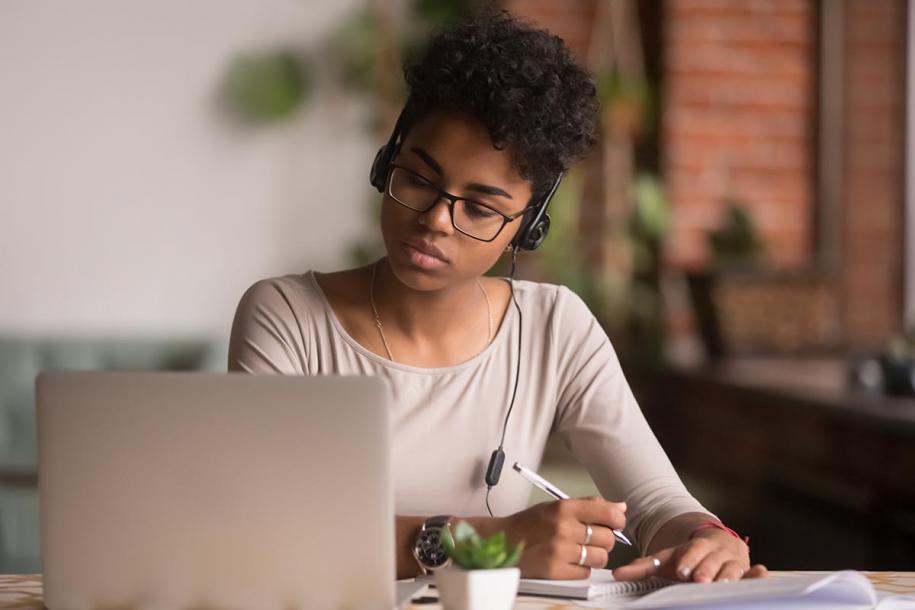
Breadcrumb
- Essential Partners
- Our Impact
- News and Notes
- 5 Tips to Show That You're Listening on Zoom
5 Tips to Show That You're Listening on Zoom

Listening on Zoom doesn’t always look the way we expect it to. There’s no one right way to help others feel that you’re listening.
Laura Feibush
Juniata College
The past year has brought us the rise of the Zoom meeting in all its glory, and with it, the corresponding exhaustion of Zoom fatigue. We’ve been made to realize, yet again, how many of our contemporary technologies ask us to balance their life-giving connectivity with their potential for draining over-exposure.
Many people have dealt with this by opting out, at least partly. More and more, people are turning their cameras off during meetings, becoming a black box in gallery view, even as they lament the very same when presenting or teaching. Unnerving as it may be to address a grid of rectangles, people have many good reasons to choose to keep their cameras off.
So how do we show each other in digital spaces that we are present and we are listening?
From my experiences in the classroom, I have learned that listening doesn’t always look the way we expect it to. There’s no one right way to help others feel that you’re listening.
With that in mind, what are some ways we might show each other that we’re listening, even with cameras off? Here are five strategies that I have seen people use with success, some of which are drawn straight from the Essential Partners playbook.
- Connect before content. The beginning of meetings is a great time to connect personally. You might consider popping your camera on for a few seconds to wave hello, or when new members join a call. You might ask one or more members of the meeting a personal question. Connecting before you get to the content can go a long way towards establishing a friendly presence.
- Utilize the chat. If you have your camera off, the chat box is a good place to type a quick greeting to colleagues when joining, or a sign-off when things are wrapping up. Throughout the meeting, you might consider showing your listening by using the chat to respond to specifics voiced by other participants. For instance: “I really agree with what Jessica is saying about the onboarding program.”
- Ask curious follow-up questions. Thoughtful, responsive questions make other people feel seen and heard. As you listen, make notes on what sparks your curiosity. Later on in the meeting, consider asking a question (camera on or off) in which you refer back to a prior moment in the conversation. Following up with a question reveals you as an active, responsive presence.
- Establish new conversational patterns. If you’re leading the meeting but can’t turn on your video, consider using a new conversational structure. You might ask each person to respond in turn, or give people a limited amount of time to share their thoughts on a topic. As a participant, you might end a comment by inviting one or two other participants to weigh in. By intentionally including more voices and creating space to listen to them, you show that you value their input.
- Follow up afterwards. No one needs more emails. However, in some cases, you can convey your active listening retroactively by following up on a specific item in an email. This can be as simple as noting to a colleague that you appreciated their comments on a given subject in a meeting or class session.
When people feel heard, they feel respected and connected. It’s an important human need that can be hard to meet during a video meeting. The dynamics of responsiveness online is something we’re navigating together now, through trial and error, in ever-changing conditions. Let’s stay open to new ways of showing our own receptivity, while acknowledging the varied listening displays of others.
Laura Feibush is Assistant Professor in the Department of English at Juniata College in Huntingdon, PA, where she teaches courses in public and professional writing, writing across media, and first-year composition.
Top Image By PlayTheTunes